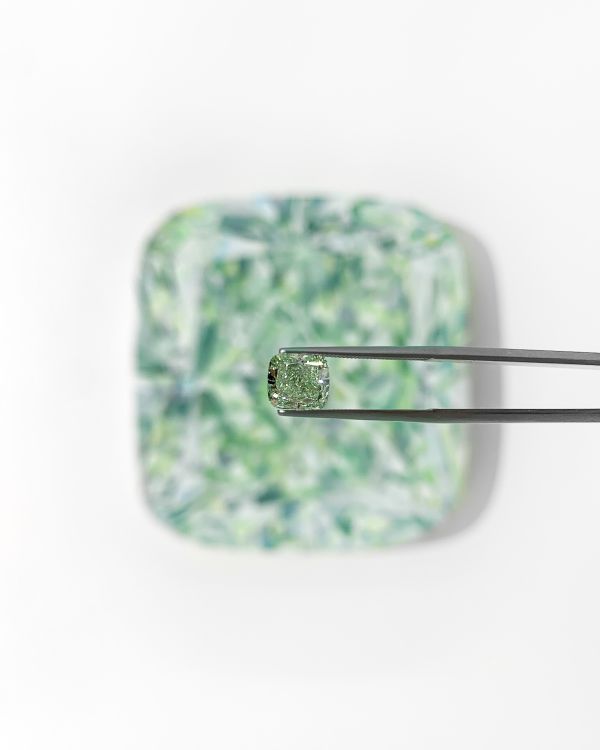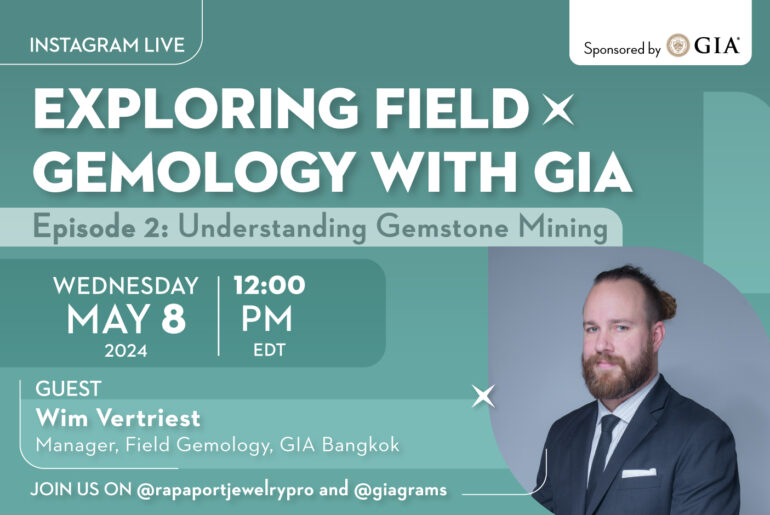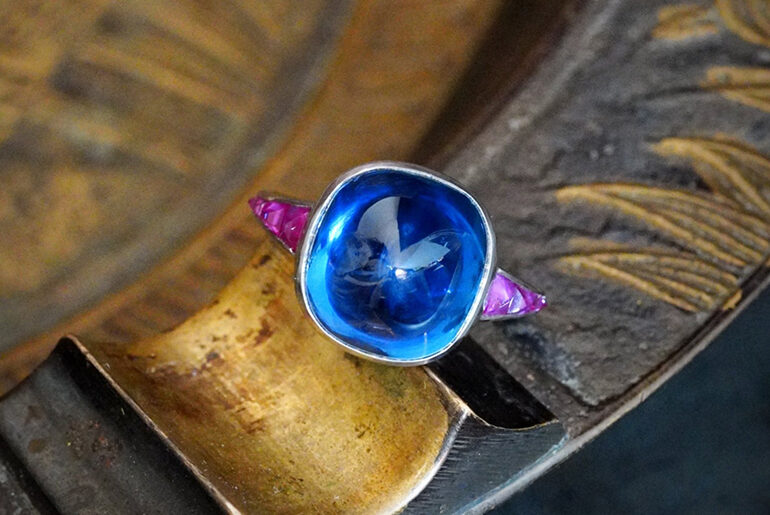In this series, we ask gem lovers: If you were to die and could come back as a gem, which one would it be, and why?
Angie Crabtree, an artist in Los Angeles, creates large paintings of real gemstones. A classically trained painter, she painted her first diamond — measuring 5 feet tall — for an exhibition in 2012. Inspired by viewers’ responses, she went on to render numerous other portraits of magnified gems, exploring “our perception of desire and the value of earth’s treasures,” as she puts it on her website.

“I would come back as a green diamond for sure,” she shares with Jewelry Connoisseur. “Green reminds me of my favorite things: plants, drinking matcha, avocados, and the outdoors. These days, I paint surrounded by my collection of plants. I’ve painted a few amazing green diamonds and had the opportunity to experience the energy of these fascinating gems.”
In fact, she adds, “one of the most valuable diamonds I’ve ever held in my hand was a large and vivid green stone.”

Diamond sits at the top of the Mohs hardness scale, ranking at an impressive 10; it is the hardest natural substance on earth. It’s also the birthstone for April and the traditional gift for a 60th wedding anniversary. Consisting of a single element, carbon, diamonds formed deep underground anywhere from one billion to three billion years ago. To give you an idea of how old diamonds are, the earth itself formed about 4.6 billion years ago.
Many inclusions that appear in diamonds contain radioactive elements that decay at set rates, allowing researchers to determine the stones’ age. However, diamonds themselves cannot be dated, as their radioactive elements decay too quickly to measure.
Green diamonds get their color from “simple structural defects produced by radiation exposure, or [from] more complex defects involving nitrogen, hydrogen, or nickel impurities,” according to the Gemological Institute of America (GIA).
Main image: Angie Crabtree. (Angie Crabtree)





Comments are closed.